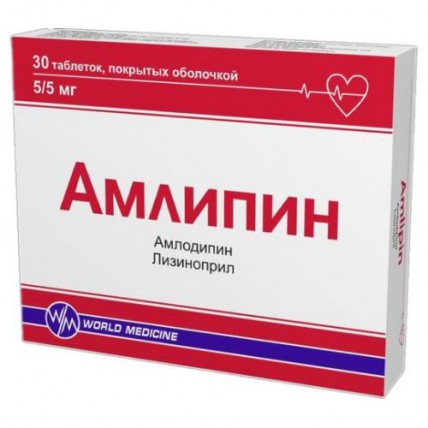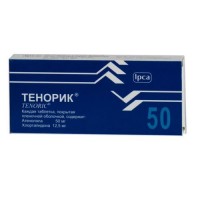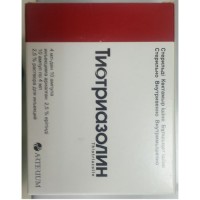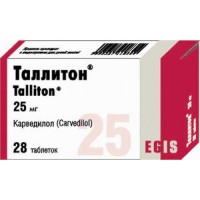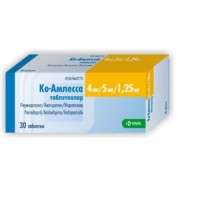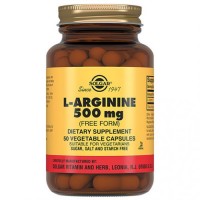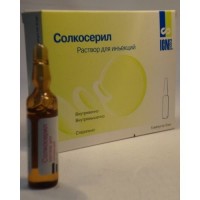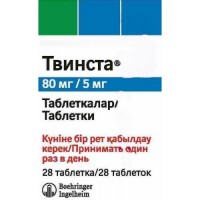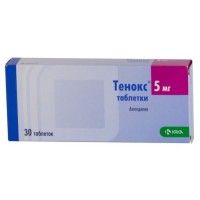Amlipin 30s 5.5 mg coated tablets
- $23.80
Sku:
3c63140cafd4
The instruction for medical use
of Amlipin Torgovoye medicine a name
Amlipin
Mezhdunarodnoye the unlicensed name
Is not present
the Dosage form
of the Tablet, coated 5/5 mg
Structure
One tablet contains
active agents: amlodipin (in the form of the besilat) 5 mg,
lisinopril (in the form of a dihydrate) 5 mg,
excipients: corn starch, calcium hydrophosphate, lactoses monohydrate, povidone (K30), sodium krakhmalglikolit, magnesium stearate.
structure of a cover: a gipromelloz (E15), the titan the dioxide, talc purified, iron oxide red, propylene glycol.
The description
Round biconvex tablets, coated, red color with an engraving of AMLP on one party and dividing risky on another.
The AKF pharmacotherapeutic group inhibitors in a combination with blockers of slow calcium channels.
The code of automatic telephone exchange C09BB
the Pharmacological
Pharmacokinetics Later properties of intake of Amlodipin slowly and almost completely (90%) is soaked up from a GIT, Smakh is reached in 6 - 10 hours. Elimination half-life averages 35 – 50 hours.
Lisinopril is well absorbed from a digestive tract irrespective of meal. Bioavailability – 25 – 50%. Smakh is reached in 6 hours. Elimination half-life makes 12 hours.
Long circulation in an organism of both active ingredients does possible administration of drug of 1 times a day.
Amlipin's pharmacodynamics – the combined antihypertensive drug which pharmacological properties it is caused by a combination of properties of an amlodipin (selection blocker of calcium channels) and lisinopril (APF inhibitor).
Amlodipin blocking slow calcium channels of a membrane, amlodipin interferes with transmembrane receipt of calcium ions in cardiomyocytes and smooth muscle cells of vessels. Under its action the tone of vessels (arterioles) and peripheric vascular resistance decreases. Due to expansion of arterioles and decrease in an afterload amlodipin has anti-anginal effect. Because it does not cause development of reflex tachycardia, at its use the need of a myocardium for oxygen decreases. Amlodipin expands both the intact, and pathological changed coronary vessels, improving perfusion of a myocardium, has no adverse metabolic effects.
Lisinopril reduces levels of angiotensin II and Aldosteronum in blood plasma and at the same time increases the level of bradykinin which has vasodilating effect. Under the influence of lisinopril the general peripheric resistance of vessels (GPRV) decreases, the arterial blood pressure (ABP), pressure in pulmonary capillaries, lisinopril does not influence the frequency of a warm rhythm, at the same time increase in minute volume and strengthening of a renal blood-groove is possible. Lisinopril reduces an albuminuria thanks to a lowering of arterial pressure and also as a result of improvement of a hemodynamics of the glomerular device and its fabric structure. At prolonged use the hypertrophy of a myocardium and walls of arteries of resistive type decreases. At patients with a hyperglycemia lisinopril promotes restoration of the broken function of an endothelium.
Indications
- arterial hypertension
- coronary heart disease (stable stenocardia, Printsmetal's stenocardia)
- chronic heart failure (as a part of complex therapy)
- a diabetic nephropathy
the Route of administration and
Amlipin's doses should be accepted inside on 1 tablet 1 times/day irrespective of meal. If necessary it is possible to increase a daily dose to 2 tablets.
Side effects
- a headache, dry cough, dizziness
- weakness, diarrhea, nausea, vomiting, orthostatic hypotension, a skin itching, skin rash, hypostasis of ankles of legs, erubescence of the person, a stethalgia.
Contraindication
- hypersensitivity to any of components of drug or to other derivatives of dihydropyridine
- the Quincke's disease in the anamnesis including connected with use of other APF inhibitors
- hemodynamically significant stenosis of an aorta or the mitral valve
- the profound arterial hypotension
- cardiogenic shock
- pregnancy and a lactation
- to children and teenagers aged up to 18 years
Medicinal interactions
Demands extra care a concomitant use with kaliysberegayushchy diuretics (Spironolactonum, amiloride, Triamterenum), potassium and kaliysoderzhashchy means in avoidance of development of a hyperpotassemia, mainly, at reduced function of kidneys. Appoint after careful assessment of advantage and risk, carrying out regular control of level of potassium to blood and function of kidneys.
Manifestation of care is necessary at a concomitant use together with:
- diuretics (perhaps sharp decrease in the ABP),
- other antihypertensives (additive action),
- non-steroidal anti-inflammatory drugs (especially with indometacin) as detain sodium and block synthesis of prostaglandins in kidneys, estrogenic means and adrenostimulyator, sympathomimetics (decrease in therapeutic effect is possible),
- lithium (deterioration in removal of lithium is possible, control of level of lithium in blood plasma is necessary).
Amiodaronum, quinidine, beta blockers, antipsychotic means (neuroleptics) can enhance hypotensive effect.
Special instructions
At patients from the liver broken by function the elimination half-life of Amlipin increases that demands care at selection of a daily dose.
The patients receiving diuretics or in dehydration of other genesis (the increased perspiration, long vomiting, a profuse diarrhea) and also in heart failure can have a symptomatic hypotension. In this case it is recommended to lay the patient, if necessary to carry out infusion of 0.9% of solution of sodium of chloride. Prior to treatment it is necessary to normalize sodium level in blood serum and to compensate liquid volume at a hypovolemia.
In case of a renal artery stenosis (especially in a bilateral stenosis or a stenosis of an artery of the only kidney) and also in dehydration the use of lisinopril can lead to a renal failure up to an acute renal failure which is usually reversible and passes after drug withdrawal.
At extensive surgeries using the anesthetics capable to cause arterial hypotension, lisinopril blocks compensatory formation of angiotensin II. The hypotension which arose owing to the above-stated mechanism can be eliminated with compensation of volume of the circulating blood.
It is necessary to observe extra care when determining a dose of drug at patients of advanced age.
In view of the fact that the potential risk of developing of an agranulocytosis completely cannot be excluded, when using drug it is necessary to carry out periodic laboratory control of peripheral blood.
Use in pediatrics
Experience of use of Amlipin for children is absent.
Features of influence of medicine on ability to run the vehicle or potentially dangerous mekhanizmamipriy drug (especially in an initiation of treatment) can affect ability to run vehicles and to carry out dangerous types of works therefore before definition of individual reaction it is necessary to refrain from similar activity.
Overdose
Symptoms: a vazodilatation with the profound lowering of arterial pressure and appearance of reflex tachycardia. Treatment: symptomatic therapy, control of warm activity, arterial blood pressure, a diuresis and vodno – electrolytic balance, in case of need carry out its correction. In the profound lowering of arterial pressure the patient is given situation lying, with the raised lower extremities. At the unsatisfactory therapeutic response to intravenous administration of deputies of liquid the introduction of a peripheral vazopressor for blood circulation maintenance can be required. For cancellation of the antagonist of calcium it is possible to enter a calcium gluconate intravenously. Because of slow absorption of an amlodipin in some cases wash out a stomach, use activated carbon. Lisinopril to be removed by means of a hemodialysis. Specific antidote does not exist.
A form of release and packing
On 10 tablets in blister strip packaging from a film of polyvinylchloride and aluminum foil. On 3 planimetric packs together with the instruction for use in the state and Russian languages put in a cardboard box.
To Store storage conditions in the dry place at a temperature not above +25 °C.
To store out of children's reach!
A period of storage
3 years of date of production.
Not to apply after an expiration date.
Prescription status
According to the prescription
the Producer
it Is made Bailey's Laboratory – Kreat, France
(Shmen de Nouizmen by Z.I. 150 Arpen, 28500 Vernuye – Frans)
according to the license Medrayk, Great Britain for UORLD MEDITSIN, Great Britain
Ph. / fax: 8 (7272) 529090
www.worldmedicine.kz
to Develop the Address of the organization accepting in the territory of the Republic of Kazakhstan claims from the consumer on quality of products (goods) of RK Almaty, Suyunbaya 222 St. of B
of Amlipin Torgovoye medicine a name
Amlipin
Mezhdunarodnoye the unlicensed name
Is not present
the Dosage form
of the Tablet, coated 5/5 mg
Structure
One tablet contains
active agents: amlodipin (in the form of the besilat) 5 mg,
lisinopril (in the form of a dihydrate) 5 mg,
excipients: corn starch, calcium hydrophosphate, lactoses monohydrate, povidone (K30), sodium krakhmalglikolit, magnesium stearate.
structure of a cover: a gipromelloz (E15), the titan the dioxide, talc purified, iron oxide red, propylene glycol.
The description
Round biconvex tablets, coated, red color with an engraving of AMLP on one party and dividing risky on another.
The AKF pharmacotherapeutic group inhibitors in a combination with blockers of slow calcium channels.
The code of automatic telephone exchange C09BB
the Pharmacological
Pharmacokinetics Later properties of intake of Amlodipin slowly and almost completely (90%) is soaked up from a GIT, Smakh is reached in 6 - 10 hours. Elimination half-life averages 35 – 50 hours.
Lisinopril is well absorbed from a digestive tract irrespective of meal. Bioavailability – 25 – 50%. Smakh is reached in 6 hours. Elimination half-life makes 12 hours.
Long circulation in an organism of both active ingredients does possible administration of drug of 1 times a day.
Amlipin's pharmacodynamics – the combined antihypertensive drug which pharmacological properties it is caused by a combination of properties of an amlodipin (selection blocker of calcium channels) and lisinopril (APF inhibitor).
Amlodipin blocking slow calcium channels of a membrane, amlodipin interferes with transmembrane receipt of calcium ions in cardiomyocytes and smooth muscle cells of vessels. Under its action the tone of vessels (arterioles) and peripheric vascular resistance decreases. Due to expansion of arterioles and decrease in an afterload amlodipin has anti-anginal effect. Because it does not cause development of reflex tachycardia, at its use the need of a myocardium for oxygen decreases. Amlodipin expands both the intact, and pathological changed coronary vessels, improving perfusion of a myocardium, has no adverse metabolic effects.
Lisinopril reduces levels of angiotensin II and Aldosteronum in blood plasma and at the same time increases the level of bradykinin which has vasodilating effect. Under the influence of lisinopril the general peripheric resistance of vessels (GPRV) decreases, the arterial blood pressure (ABP), pressure in pulmonary capillaries, lisinopril does not influence the frequency of a warm rhythm, at the same time increase in minute volume and strengthening of a renal blood-groove is possible. Lisinopril reduces an albuminuria thanks to a lowering of arterial pressure and also as a result of improvement of a hemodynamics of the glomerular device and its fabric structure. At prolonged use the hypertrophy of a myocardium and walls of arteries of resistive type decreases. At patients with a hyperglycemia lisinopril promotes restoration of the broken function of an endothelium.
Indications
- arterial hypertension
- coronary heart disease (stable stenocardia, Printsmetal's stenocardia)
- chronic heart failure (as a part of complex therapy)
- a diabetic nephropathy
the Route of administration and
Amlipin's doses should be accepted inside on 1 tablet 1 times/day irrespective of meal. If necessary it is possible to increase a daily dose to 2 tablets.
Side effects
- a headache, dry cough, dizziness
- weakness, diarrhea, nausea, vomiting, orthostatic hypotension, a skin itching, skin rash, hypostasis of ankles of legs, erubescence of the person, a stethalgia.
Contraindication
- hypersensitivity to any of components of drug or to other derivatives of dihydropyridine
- the Quincke's disease in the anamnesis including connected with use of other APF inhibitors
- hemodynamically significant stenosis of an aorta or the mitral valve
- the profound arterial hypotension
- cardiogenic shock
- pregnancy and a lactation
- to children and teenagers aged up to 18 years
Medicinal interactions
Demands extra care a concomitant use with kaliysberegayushchy diuretics (Spironolactonum, amiloride, Triamterenum), potassium and kaliysoderzhashchy means in avoidance of development of a hyperpotassemia, mainly, at reduced function of kidneys. Appoint after careful assessment of advantage and risk, carrying out regular control of level of potassium to blood and function of kidneys.
Manifestation of care is necessary at a concomitant use together with:
- diuretics (perhaps sharp decrease in the ABP),
- other antihypertensives (additive action),
- non-steroidal anti-inflammatory drugs (especially with indometacin) as detain sodium and block synthesis of prostaglandins in kidneys, estrogenic means and adrenostimulyator, sympathomimetics (decrease in therapeutic effect is possible),
- lithium (deterioration in removal of lithium is possible, control of level of lithium in blood plasma is necessary).
Amiodaronum, quinidine, beta blockers, antipsychotic means (neuroleptics) can enhance hypotensive effect.
Special instructions
At patients from the liver broken by function the elimination half-life of Amlipin increases that demands care at selection of a daily dose.
The patients receiving diuretics or in dehydration of other genesis (the increased perspiration, long vomiting, a profuse diarrhea) and also in heart failure can have a symptomatic hypotension. In this case it is recommended to lay the patient, if necessary to carry out infusion of 0.9% of solution of sodium of chloride. Prior to treatment it is necessary to normalize sodium level in blood serum and to compensate liquid volume at a hypovolemia.
In case of a renal artery stenosis (especially in a bilateral stenosis or a stenosis of an artery of the only kidney) and also in dehydration the use of lisinopril can lead to a renal failure up to an acute renal failure which is usually reversible and passes after drug withdrawal.
At extensive surgeries using the anesthetics capable to cause arterial hypotension, lisinopril blocks compensatory formation of angiotensin II. The hypotension which arose owing to the above-stated mechanism can be eliminated with compensation of volume of the circulating blood.
It is necessary to observe extra care when determining a dose of drug at patients of advanced age.
In view of the fact that the potential risk of developing of an agranulocytosis completely cannot be excluded, when using drug it is necessary to carry out periodic laboratory control of peripheral blood.
Use in pediatrics
Experience of use of Amlipin for children is absent.
Features of influence of medicine on ability to run the vehicle or potentially dangerous mekhanizmamipriy drug (especially in an initiation of treatment) can affect ability to run vehicles and to carry out dangerous types of works therefore before definition of individual reaction it is necessary to refrain from similar activity.
Overdose
Symptoms: a vazodilatation with the profound lowering of arterial pressure and appearance of reflex tachycardia. Treatment: symptomatic therapy, control of warm activity, arterial blood pressure, a diuresis and vodno – electrolytic balance, in case of need carry out its correction. In the profound lowering of arterial pressure the patient is given situation lying, with the raised lower extremities. At the unsatisfactory therapeutic response to intravenous administration of deputies of liquid the introduction of a peripheral vazopressor for blood circulation maintenance can be required. For cancellation of the antagonist of calcium it is possible to enter a calcium gluconate intravenously. Because of slow absorption of an amlodipin in some cases wash out a stomach, use activated carbon. Lisinopril to be removed by means of a hemodialysis. Specific antidote does not exist.
A form of release and packing
On 10 tablets in blister strip packaging from a film of polyvinylchloride and aluminum foil. On 3 planimetric packs together with the instruction for use in the state and Russian languages put in a cardboard box.
To Store storage conditions in the dry place at a temperature not above +25 °C.
To store out of children's reach!
A period of storage
3 years of date of production.
Not to apply after an expiration date.
Prescription status
According to the prescription
the Producer
it Is made Bailey's Laboratory – Kreat, France
(Shmen de Nouizmen by Z.I. 150 Arpen, 28500 Vernuye – Frans)
according to the license Medrayk, Great Britain for UORLD MEDITSIN, Great Britain
Ph. / fax: 8 (7272) 529090
www.worldmedicine.kz
to Develop the Address of the organization accepting in the territory of the Republic of Kazakhstan claims from the consumer on quality of products (goods) of RK Almaty, Suyunbaya 222 St. of B
